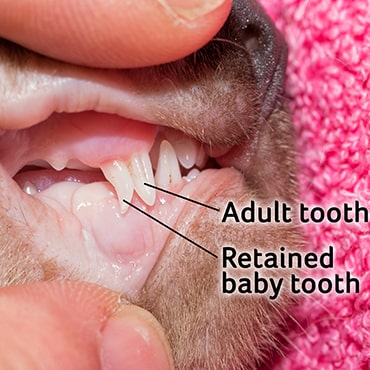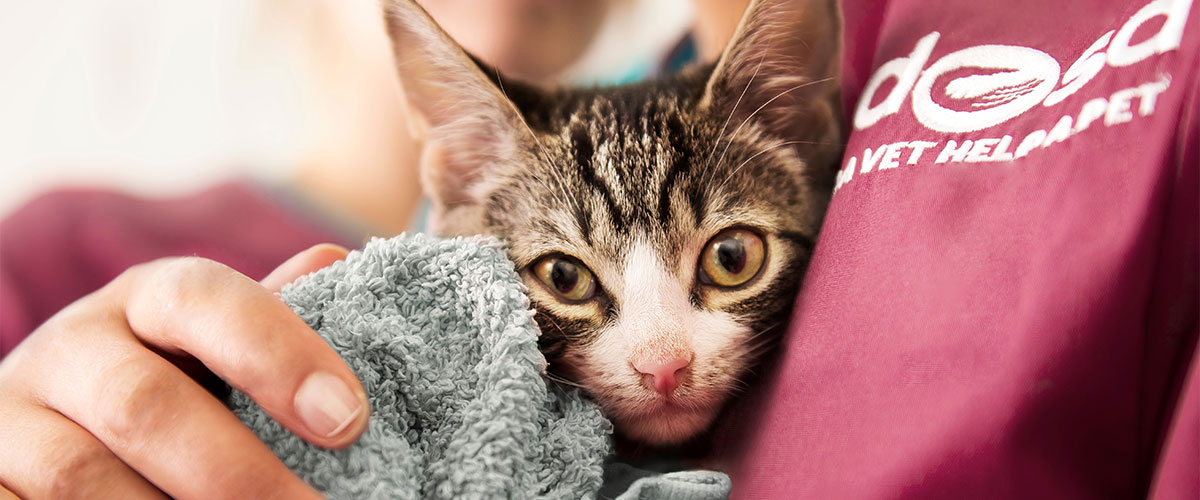Wobbly teeth in cats
Overview
- Adult cats shouldn’t have wobbly teeth, if you notice any, it’s a sign something is wrong.
- Kittens start losing their baby teeth at around 3 months old when they are replaced by adult teeth.
- Wobbly teeth can be very painful, especially when eating.
- Wobbly teeth usually need removing by a vet under anaesthetic.
- Book your cat in for a check-up if you notice they have loose or wobbly teeth.
How will I know if my cat has a wobbly tooth?
It's not easy because our feline friends don't usually like us looking in their mouths! You may notice:
- A tooth at an odd angle
- Your cat can't shut their mouth
- Wanting to eat but then walking away from food
- Trouble eating or dropping food
- Drooling
- Mouth pain (pawing at the mouth or only eating on one side of their mouth)
Why is my cat's tooth wobbly?
- Tooth and gum disease – the most common cause of wobbly teeth. Unless wobbly teeth are removed, they tend to stay in place, causing pain and discomfort for many years.
- Injuries – such as bumps, collisions, road traffic accidents and chewing on hard objects (rare for cats).
- Dropped canines – as a cat gets older, their canines (fangs) often drop down a bit because tooth attachments get old and worn. Dropped canines are usually wobbly, painful and need removal.
- Tumours in the mouth – cancer in the mouth, jawbone or gums often damage the structures that hold teeth in place.
- Baby teeth – kittens usually start to lose their baby teeth at around 3 months old. This is completely normal - they will be replaced by permanent adult teeth.

This cat’s baby tooth should have fallen out before the adult canine grew through
When to contact your vet
Wobbly teeth are painful - if you think your cat may have one, get in contact with your vet. They are likely to need a general anaesthetic for it to be removed but your vet will be able to discuss the options with you during your appointment.
You know your cat best. If you are concerned, contact your vet.
Preventing dental disease
Prevention is always better than cure, and dental disease is easy to prevent by feeding the right diet, having regular check-ups with your vet and by brushing your cat’s teeth (using a pet toothpaste). If you don’t think your cat will tolerate their teeth being brushed, talk to your vet or vet nurse about other options such as special dental diets, additives for water and tartar dissolving gels or powders.
Cost
Treatment for dental problems can become very expensive. It’s important to speak openly to your vet about your finances, the cost of treatment, as well as what you think is right for your cat - there might be more than one treatment option.
When you welcome a new cat into your life, consider getting cat insurance straight away before any signs of illness start. This will give you peace of mind that you have some financial support if they ever get sick.
Published: June 2020
Did you find this page useful?
Tell us more
Please note, our vets and nurses are unable to respond to questions via this form. If you are concerned about your pet’s health, please contact your vet directly.
Thank you for your feedback
Want to hear more about PDSA and get pet care tips from our vet experts?
Sign up to our e-newsletter
Written by vets and vet nurses. This advice is for UK pets only. Illustrations by Samantha Elmhurst.

